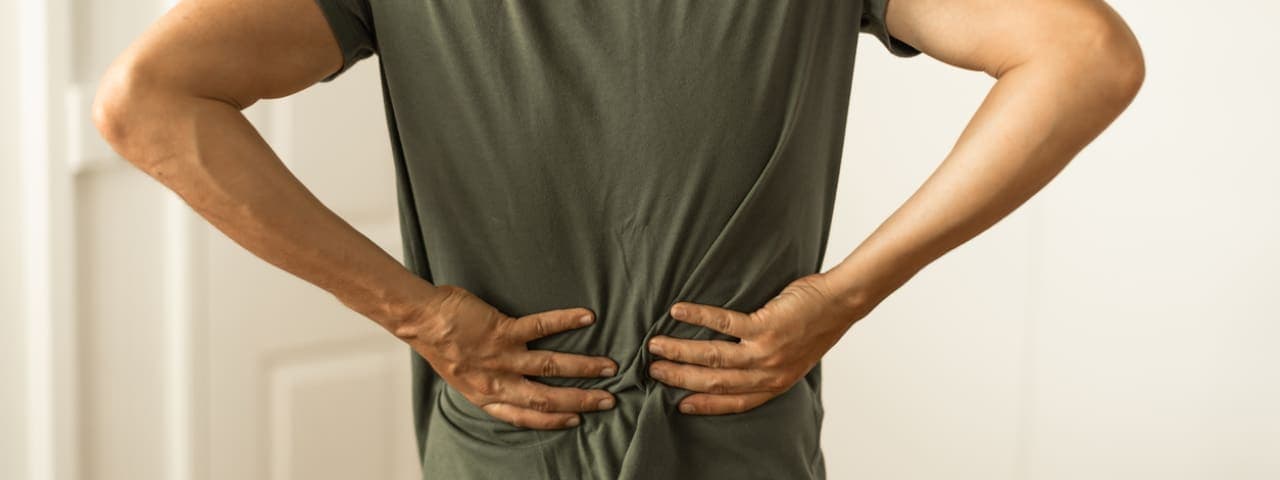6 best strains for chronic pain

Article written by

April AcernoContent Writer
Content reviewed by

Dipak HemrajMedical Cannabis Researcher
Over 51 million people have chronic pain, whether it’s caused by a past injury or a health condition like:
While traditional treatments can help, you might consider cannabis for pain relief. Among the many strains of cannabis you can try, some are more known for soothing chronic pain than others.
Get your medical marijuana card
Best cannabis strains for chronic pain
Some cannabis strains are more commonly recommended for chronic pain relief than others. Consider experimenting with a variety of strains, such as the ones below, to find which one works for your needs.
ACDC

ACDC has a high cannabidiol (CBD) concentration of 12%, and only 1% tetrahydrocannabinol (THC), so it won’t cause a ‘high.’ This strain is ideal for pain relief, and can also enhance focus, making it ideal for daytime. ACDC is high in myrcene, a terpene that may help lower pain and inflammation.
Harlequin

Harlequin has about 9% CBD and 5% THC, making it a popular choice for chronic pain, especially if you’re seeking relief without strong psychoactive effects. Harlequin also contains a high amount of myrcene for further pain and inflammation relief.
Cannatonic

With 9% CBD and 4% THC, Cannatonic is a cannabis strain ideal for daytime pain management, as it may provide pain relief without sedation. Other effects associated with this strain are relaxation and focus. Cannatonic is another myrcene-heavy strain, and it’s also high in pain-relieving pinene and beta-caryophyllene.
Northern Lights

Northern Lights has a THC concentration of approximately 18%, so it can cause intoxication. THC also has euphoric and muscle-relaxing effects which may reduce pain. It can improve sleep and lower stress because of its high level of myrcene.
White Widow

White Widow is a popular option for pain because of its above-average levels of myrcene and cannabigerol (CBG). At 15% THC, it’s moderately intoxicating. White Widow may relieve pain while stimulating the body and mind.
Blueberry

Blueberry contains about 17% THC, making it moderately intoxicating. It’s popular for its pain-relieving and stress-relieving effects. Its terpene profile is high in myrcene, pinene, beta-caryophyllene, and humulene.Blueberry may be best for nighttime because it can cause drowsiness.
How cannabis could help chronic pain
Studies show that cannabinoids in cannabis like THC and CBD may help with chronic pain. Your endocannabinoid system uses cannabinoids to balance bodily processes like pain and inflammation.
CBD interacts with receptors belonging to the endocannabinoid system that regulate inflammation and pain response. THC may ease chronic pain while producing intoxicating effects.
Cannabis also contains several terpenes that may help with inflammation, pain, stress, and anxiety. They include:
Cannabis vs. opioids for chronic pain
Opioids, including codeine and morphine, are lab-made medications. They act on opioid receptors to change how your brain receives pain messages from your body. While effective, they can cause side effects like:
- Compromised immune system
- Depression
- Obesity
They’re also addictive; opioid addiction is the leading cause of drug-related deaths in the U.S.
Cannabinoids also act on opioid receptors to lower your response to pain. Cannabis’s side effects are milder, and include:
- Drowsiness
- Forgetfulness
- Dry mouth
- Anxiety
How to use cannabis for chronic pain relief
There are several types of cannabis products, and all of them might be effective for chronic pain. Choose a product type based on your personal preference, and consider asking your doctor for more personal guidance.
Tinctures are a popular choice for their fast-acting and long-lasting effects. They can take effect in about 15 to 30 minutes. Vaporizers can take effect in even less time, but the effects last for no more than a couple of hours.
Edibles and capsules can take 1 to 2 hours to take effect, but last for up to 8 hours.
Cannabis topicals like creams and gels are applied to the skin for localized relief. Because the cannabinoids stay local to the application area, they don’t produce intoxicating effects.
The takeaway: These cannabis strains can offer pain relief
Many cannabis strains can be used for chronic pain relief, including the ones above. The key is experimenting with a variety of strains until you find what works best for your body and symptoms.
With a medical cannabis card, you can access higher-potency products and save money at dispensaries. Contact Leafwell to start the process of getting a medical card today.
Resources
- Antioxidative and anti-inflammatory properties of cannabidiol. https://pmc.ncbi.nlm.nih.gov/articles/PMC7023045/
- Cannabidiol for pain treatment: Focus on pharmacology and mechanism of action. https://pmc.ncbi.nlm.nih.gov/articles/PMC7700528/
- Cannabis sativa L. as a natural drug meeting the criteria of a multitarget approach to treatment. https://pubmed.ncbi.nlm.nih.gov/33466734/
- Cannabis versus opioids for pain. https://www.ncbi.nlm.nih.gov/books/NBK573080/
- Drug overdose deaths: Facts and figures. https://nida.nih.gov/research-topics/trends-statistics/overdose-death-rates
- Marijuana and pain. https://www.ncbi.nlm.nih.gov/books/NBK224384/
- Medical cannabis in asthmatic patients. https://pubmed.ncbi.nlm.nih.gov/32286026/
- Myrcene – what are the potential health benefits of this flavouring and aroma agent? https://pmc.ncbi.nlm.nih.gov/articles/PMC8326332/
- Opioid-sparing effect of cannabinoids: A systematic review and meta-analysis. https://www.nature.com/articles/npp201751
- Pain, cannabis species, and cannabis use disorders. https://pmc.ncbi.nlm.nih.gov/articles/PMC4869908/
- The endocannabinoid system and cannabidiol’s Promise for the treatment of substance use disorder. https://pmc.ncbi.nlm.nih.gov/articles/PMC6390812/
- The therapeutic potential of cannabidiol in revolutionising opioid use disorder management. https://pmc.ncbi.nlm.nih.gov/articles/PMC10789504/
Frequently asked questions
Learn more about cannabis strains for pain relief from our FAQ section below.


